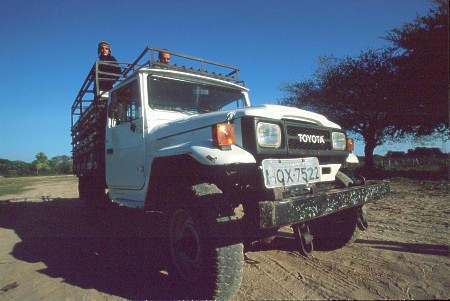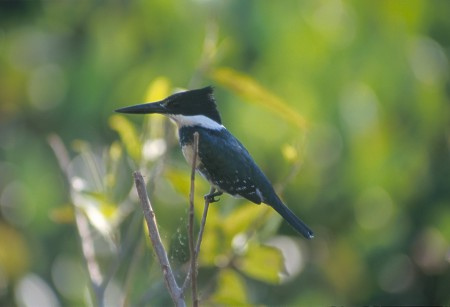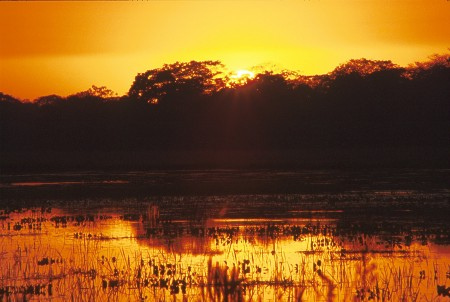Pantanal Culture: Rodeio
Although most people associate Rodeo with the United States, its a tradition that grew out of Spanish and Mexican methods of working cattle. The Americans just made it bigger, better and more organised.
Nonetheless, it's this American form of rodeo which has had the most influence in Brazil. Modern Brazilian Rodeo was largely born as a result of Festa do Peão de Barretos (Peão is another word for cowboy in Portuguese). This festival originated in 1955, in the São Paulo state town of Barretos, when groups of cowboys from the town and surrounding states stated a horse riding competition to decide the best among them. Gradually these competitions expanded, incorporating other rodeo sports such as bull riding and lasso. The Barretos festival runs for 10 days in August each year, and consistently draws the world's largest rodeo crowd - over 1 million visitors each year.
Since Barretos began over 50 years ago, Rodeio (Brazilian spelling) festivals have spread nationwide - with some of the best occurring in the Pantanal states of Mato Grosso and Mato Grosso do Sul.
The biggest competitions, such as Professional Bull Riders (PBR), tend to occur during the dry season months when there's less chance of being interrupted by rain (or muddy arenas), and the weather is generally cooler. Dates will vary from year to year - but an approximate schedule is shown below:
City
Date
Poconé, MT: Circuito Mato-Grossense de Rodeio
January
Jaciara, MT: Festa do Peão de Boiadeiro
April
Cuiabá, MT: ExpoAgro
July
Poconé, MT: ExpoAgro
July
Jaciara, MT: Circuito Mato-Grossense de Rodeio
August
Cáceres, MT: ExpoAgro
August
Aquiduana, MS
August
Dourados, MS: PBR 8 Seconds
August
Corumbá, MS
Sep-Oct
Miranda, MS: Homem do Pantanal
Mid Oct
Campo Grande, MS: PBR 8 Seconds
Oct-Nov
Rondonópolis, MT: Circuito Mato-Grossense de Rodeio
December
Brazilians have developed their own techniques in the sport, but have also adopted some North American methods as they've seen fit. In recent years, on the Professional Bull Riders circuit, Brazilians such as Adriano Morães, Silvano Alves, and Renato Nunes have dominated the competition over their North American and Australian counterparts. Part of this is simply the popularity of the sport in Brazil, but the lure of big prize money may be another motivator - bringing many more riders into the sport, who treat it as a full-time profession with strict training regimes. Another factor could simply be that Brazilian bulls (bred primarily for beef) tend to be bigger and harder to handle - which gives the Brazilians an advantage in competition. Whatever the reason, it all makes for spectacular watching.
Rodeio shows are an opportunity to celebrate Brazil's rural culture. The festivals will generally last several days - with big openings, fireworks, agricultural expositions, and big-name sertanejo music acts, as well as the rodeo performances themselves. The fact that this is now big business means that the rodeios are big professionally run affairs.
Note: If visiting a rodeio, it's a generally a safe and very enjoyable day/night out - but (as with any big festival), it's recommended not to carry large amounts of cash, passports or be too obvious with large flashy cameras. Any gathering with such a large number of people (and distractions) is a prime opportunity for pick pockets.
Multimedia Links










Image credits: Bull rider (Shutterstock/Jim Parkin)
Bandeirante, Sunset, and Kingfisher (Andrew Mercer)
Pantanal Escapes